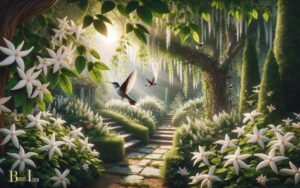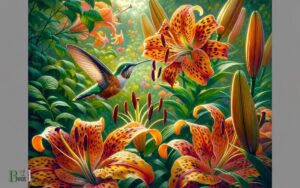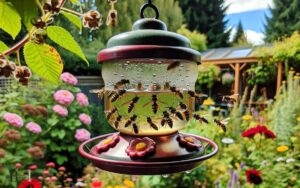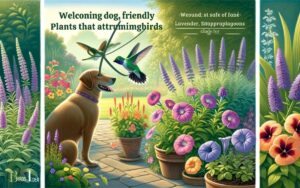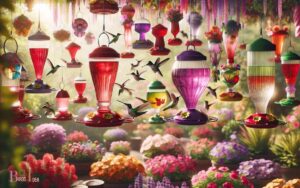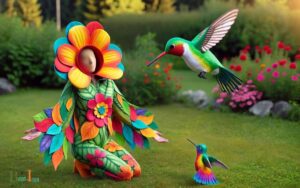Do Coral Bells Attract Hummingbirds? Yes!
Yes, Coral Bells, also known as Heuchera, are flowering perennials that are known to attract hummingbirds. Their colorful bell-shaped flowers provide a nectar-rich source that hummingbirds love.
Coral Bells are attractive not only for their foliage, which can range in color from silver to green to deep burgundy, but also for their delicate flowers that bloom on long stems above the leaves.
Coral Bells’ vibrant blooms atop slender stalks create an inviting landscape for hummingbirds, making these plants an excellent choice for gardeners looking to attract these fascinating birds.
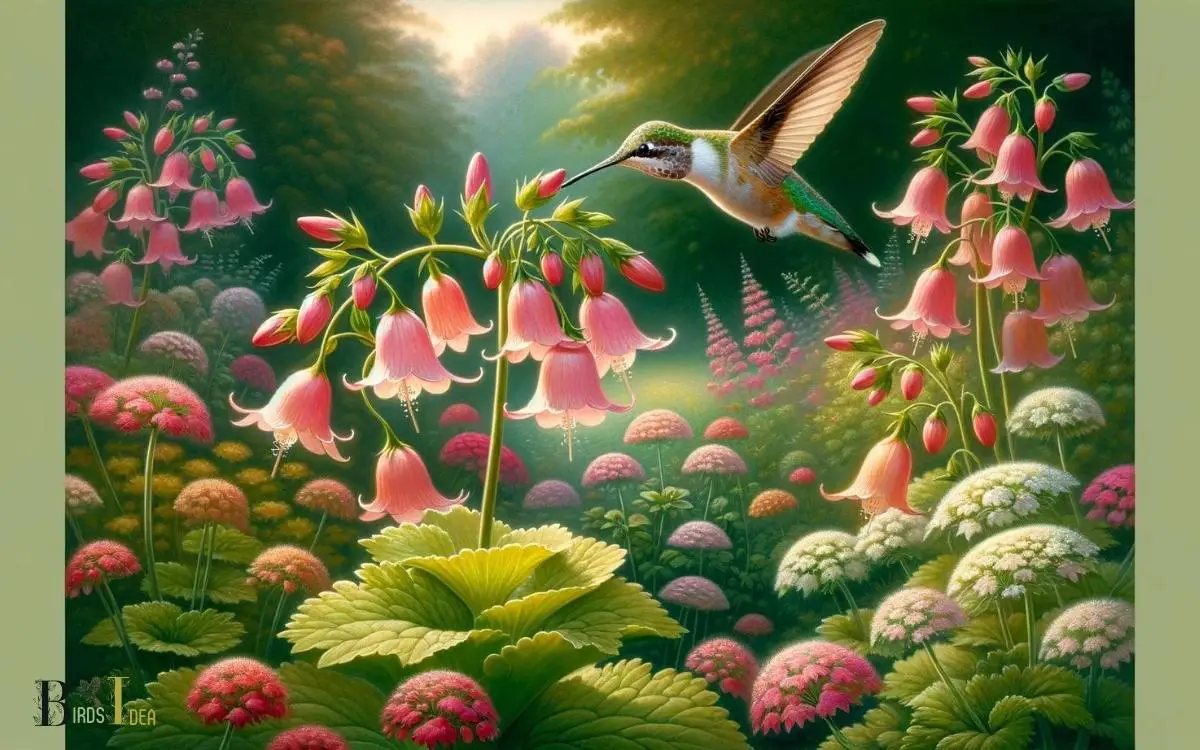
Key Takeaway
The Attractive Qualities of Coral Bells
Coral bells attract hummingbirds with their vibrant, bell-shaped flowers and nectar-rich blooms.
The colorful and showy flowers of coral bells, also known as Heuchera, make them an irresistible attraction for hummingbirds.
These bell-shaped flowers come in a variety of hues, including shades of pink, red, coral, and white, which stand out in any garden.
The nectar produced by the blooms provides a vital food source for hummingbirds, drawing them to the garden and encouraging their frequent visits.
Additionally, the long blooming period of coral bells ensures that there is a steady supply of nectar for the hummingbirds throughout the spring and summer months.
With their appealing visual display and abundant nectar, it’s no wonder that coral bells are a favorite choice for gardeners looking to attract hummingbirds.
Characteristics of Hummingbird-Friendly Flowers
Hummingbirds are attracted to flowers with bright colors and abundant nectar, making them an essential food source for the birds.
These birds are particularly drawn to red, orange, and pink blooms, as these colors stand out in their environment.
Tubular-shaped flowers are also favored by hummingbirds because they provide easy access to the nectar with their long, specialized beaks.
Additionally, flowers that bloom in succession and produce nectar throughout the day are especially attractive to hummingbirds, as they provide a consistent food source.
Understanding these characteristics can help gardeners and nature enthusiasts create hummingbird-friendly environments.
These features of hummingbird-friendly flowers will provide important context for understanding how coral bells, with their unique nectar and behavior, interact with these fascinating birds.
Coral Bells’ Nectar and Hummingbird Behavior
The nectar of coral bells plays a crucial role in influencing hummingbird behavior. Coral bells produce nectar that is rich in sucrose, a type of sugar that provides a high-energy source for hummingbirds.
When hummingbirds consume this nectar, it fuels their high metabolism, allowing them to sustain their rapid wing beats and high-energy lifestyle.
The color and scent of coral bell flowers also attract hummingbirds. The bright, tubular flowers are well-suited for the long bills of hummingbirds, making it easier for them to access the nectar.
As a result, hummingbirds are known to frequent gardens and natural areas with coral bells, often exhibiting behaviors such as hovering and feeding while in close proximity to these plants.
This interaction highlights the important relationship between coral bells’ nectar and hummingbird behavior.
Benefits of Attracting Hummingbirds by Planting Coral Bells
Coral bells, also known as Heuchera, are perennial plants that produce delicate, bell-shaped flowers and attractive foliage.
Attracting hummingbirds to your garden by planting coral bells can offer several benefits:
Pollination
Hummingbirds are efficient pollinators. As they feed on the nectar of coral bell flowers, they inadvertently transfer pollen from one flower to another, promoting the reproduction of these plants. This can enhance the overall health and vitality of your garden.
Biodiversity
Attracting hummingbirds contributes to the overall biodiversity of your garden. A diverse ecosystem with various plant and animal species is more resilient and sustainable.
Natural Pest Control
Hummingbirds consume small insects and spiders as part of their diet. By attracting hummingbirds to your garden with coral bells, you may experience a reduction in unwanted pests, contributing to a more balanced and natural pest control system.
Aesthetic Appeal
Hummingbirds are fascinating and beautiful creatures. Watching them flit and hover around your coral bell flowers adds a dynamic and colorful element to your garden. This can enhance the aesthetic appeal of your outdoor space.
Educational Opportunities
If you have children or are interested in bird watching, attracting hummingbirds provides an excellent educational opportunity. Observing these tiny, energetic birds can spark curiosity about nature and wildlife.
Low Maintenance
Coral bells are generally low-maintenance plants, making them a practical choice for attracting hummingbirds.
Once established, they require minimal care, and the presence of hummingbirds adds vibrancy without much effort on your part.
Environmental Impact
Attracting hummingbirds aligns with sustainable gardening practices. By creating a habitat that supports these pollinators, you contribute to the conservation of local biodiversity and promote a healthier environment.
Seasonal Interest
Coral bells often bloom in spring and continue to provide visual interest through their unique foliage even when not in bloom. This can ensure that your garden remains visually appealing throughout different seasons.
Remember to plant coral bells in well-drained soil, provide adequate sunlight, and maintain proper watering to ensure their health and encourage hummingbird visits.
Additionally, consider incorporating other hummingbird-friendly plants and features in your garden to create a more inviting habitat for these delightful birds.
Tips for Attracting Hummingbirds to Coral Bells
When creating a hummingbird-friendly garden with coral bells, it is essential to focus on specific strategies to attract these delightful birds.
To attract hummingbirds to coral bells, consider planting them in clusters to create a visually appealing display that catches the birds’ attention.
Using a variety of coral bell colors, such as red, pink, or orange, can also help attract hummingbirds, as these colors are known to be particularly appealing to them.
Additionally, providing a water source, such as a birdbath or a small fountain, near the coral bells can make your garden even more enticing to hummingbirds. It’s important to keep the garden pesticide-free to ensure the safety of the hummingbirds.
Lastly, placing feeders with nectar nearby can provide an additional food source, further encouraging hummingbirds to visit your coral bells.
Conclusion
Coral bells are indeed attractive to hummingbirds due to their nectar-rich flowers and bright, inviting colors.
They make a wonderful addition to any garden looking to attract these delightful birds. With the right care and placement, coral bells can act as a beacon, drawing hummingbirds in like a magnet to metal.
So, plant some coral bells and watch your garden come alive with the vibrant energy of these tiny, fluttering jewels.

